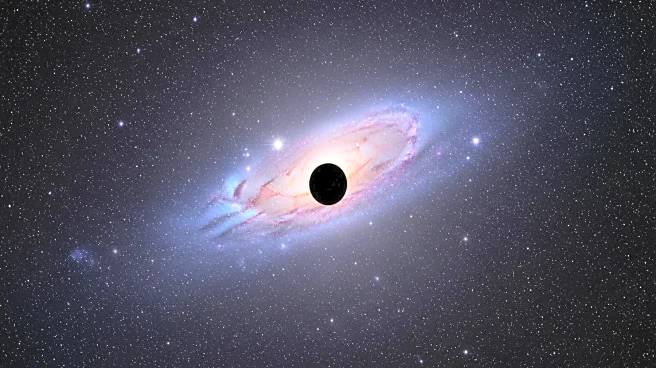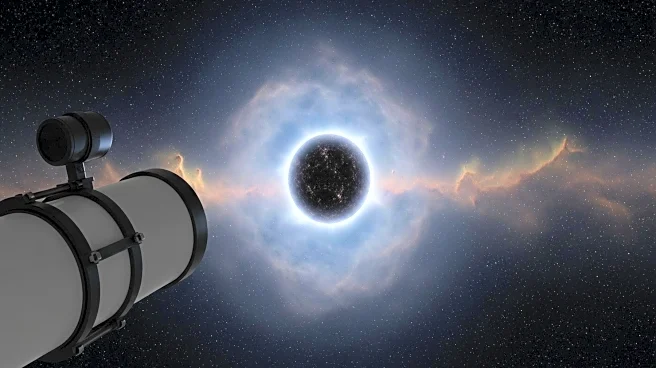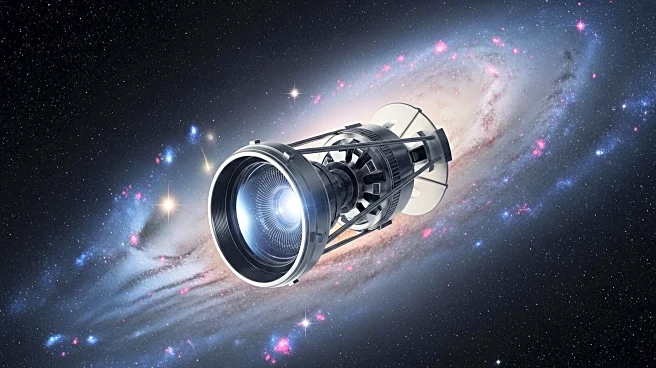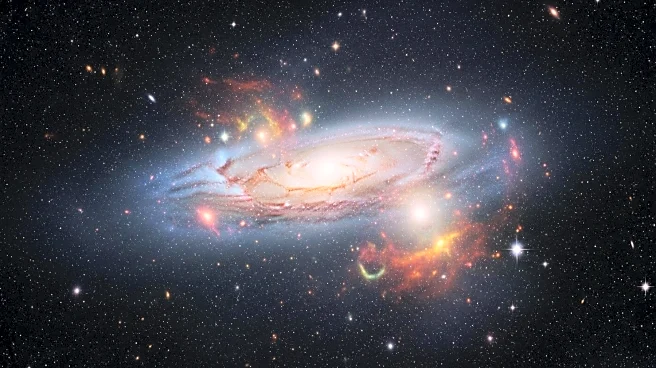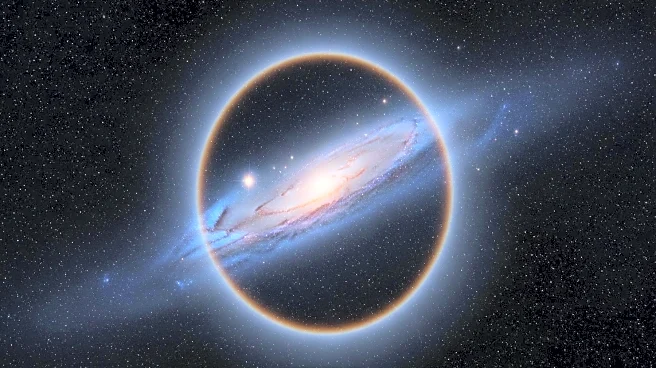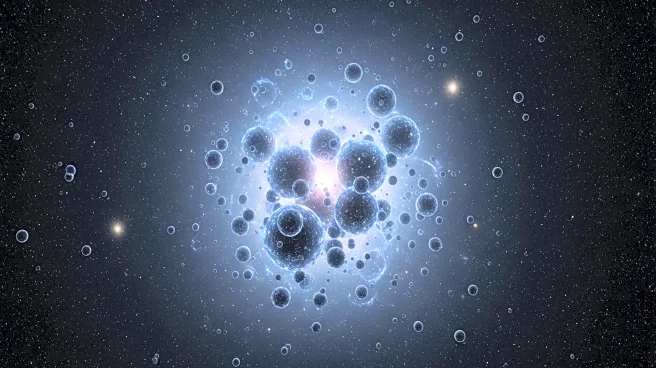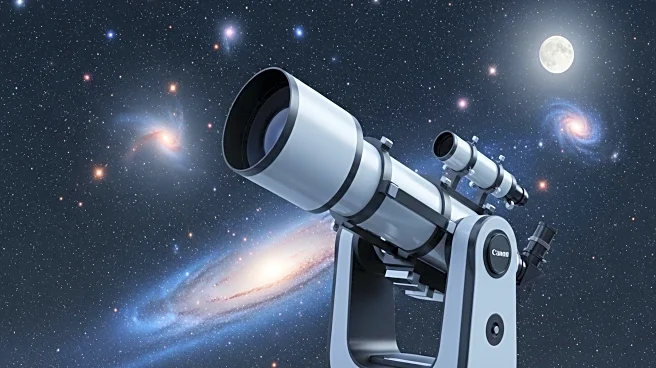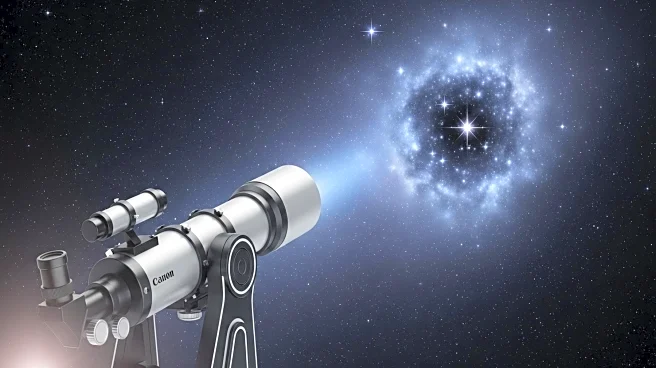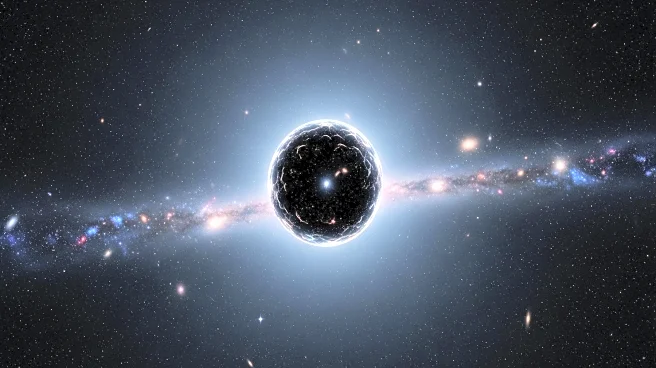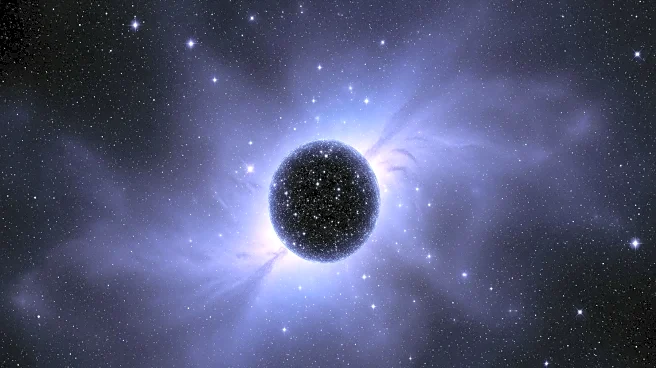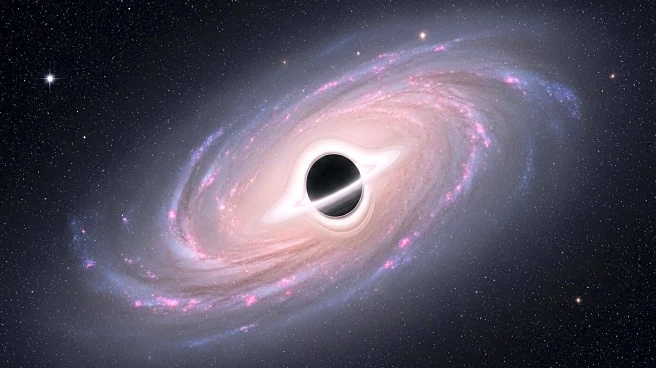What's Happening?
The James Webb Space Telescope (JWST) may have identified evidence of a hypothetical object known as a dark star in the distant universe. These supermassive dark stars are bright, giant clouds primarily composed of hydrogen and helium, supported by self-annihilating dark matter. Researchers studying four distant objects found that all are consistent with the dark star hypothesis. One object displayed a light absorption feature indicative of dark stars, arising from singly ionized helium. This discovery could solve several mysteries in physics, offering insights into the nature of dark matter and the formation of supermassive black holes.
Why It's Important?
The potential discovery of dark stars could revolutionize our understanding of dark matter and its role in cosmic evolution. These stars may provide clues about the early universe and the formation of supermassive black holes, which have been observed at masses that challenge existing growth theories. Confirming the existence of dark stars could lead to new models in astrophysics, impacting how scientists interpret cosmic phenomena and the universe's history. This research highlights the JWST's capabilities in exploring the universe's depths and advancing scientific knowledge.
What's Next?
Further observations are needed to confirm the identity of these objects and their classification as dark stars. Researchers will continue analyzing data from JWST to refine their understanding of these distant giants. The study may prompt additional investigations into the nature of dark matter and its interactions with cosmic structures. As more evidence is gathered, scientists will be better equipped to address fundamental questions in physics and cosmology.
Beyond the Headlines
The discovery challenges existing theories about star formation and the universe's early development. It underscores the importance of innovative technology in expanding our cosmic knowledge and the need for interdisciplinary collaboration in addressing complex scientific questions.
